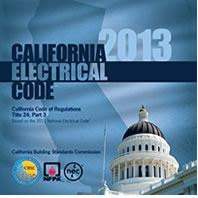The Raritan Blog
Home » Raritan Blog » What California’s Title 24 2013 Energy Efficiency Standards Mean for Your Data Center
What California’s Title 24 2013 Energy Efficiency Standards Mean for Your Data Center
Michael Bord
April 18, 2014
 California’s Title 24 2013 energy efficiency standards will go into effect on July 1, 2014. Prior to 2013 California data centers were considered exempt from Title 24, but that’s no longer the case as most data centers will now require:
California’s Title 24 2013 energy efficiency standards will go into effect on July 1, 2014. Prior to 2013 California data centers were considered exempt from Title 24, but that’s no longer the case as most data centers will now require:
- Economizers in small computer rooms in buildings that have economizers
- Prohibiting reheat in computer rooms
- Prohibiting non-adiabatic humidification in computer rooms
- Limiting the power of fan systems serving computer rooms to 27 watts/kBtuh of net sensible cooling capacity
- Variable speed controls on all chilled water fan systems and all direct expansion (DX) systems over 5 tons serving computer rooms.
- Containment in large, high density data centers with air-cooled computers
The greatest benefit the new standards provide come in energy savings. According to a study conducted by the California Statewide Utility Codes and Standards Program, a prototypical building that measures 20,000 sq ft and whose design IT load is 100 W per sq ft will save $520 per square foot, per year by meeting the new requirements. This amounts to $10,500,000 total yearly energy savings.
Other significant non-energy related benefits derived from the new law will include: better computer performance as a result of reduced hot spots, less fan noise due to variable speeds, improved comfort for workers since there’s no need to overcool, and backup cooling capacity from economizers should CRAH or CRAC units fail.
However, there are potential drawbacks to the new requirements as well. In the event of a CRAC failure, airflow containment creates a shorter window during which to get the unit up and running again before exceeding safe operating temperatures (this is true even with economizers – which will be dependent on California temperatures within a range of 64.4°F to 80.6°F – serving as backup cooling systems).
Additionally, using economizers introduces outside air which may inadvertently admit gaseous contaminants like dust and pollen, and/or introduce higher humidity air that can lead to condensation. Nonetheless, the new mandates are a positive step toward creating energy efficiency guidelines that may eventually have far-reaching implications for data centers nationwide.
In fact, improved data center environment monitoring will allow facility managers to overcome any potential drawbacks and meet requirements. In order to meet requirements for having variable speed fan speed systems and limiting the power of fan systems, data centers will have to employ temperature sensors to cold aisle containments that can feed back to a BMS or DCIM software solution, that autonomously starts fans at predetermined speeds, as and when needed.
Better data center monitoring will also negate potential drawbacks. Airflow sensors can monitor flow rates of cooling and hot air return to ensure cooling and containment systems are functioning optimally. While humidity sensors can help data centers to maintain proper humidity levels, especially when drawing external air through a system of economizers.
California data centers may also wish to build upon energy savings achieved through the new energy code by implementing a DCIM monitoring solution that, in addition to collecting environment data and alerting data center managers to potential issues, can also lead to efficient IT device utilization, and intelligent power distribution.
Other Blog Posts
- The Rapid Growth of AI and the Use of Raritan PDUs to Meet Higher Power Demands
- Posted on October 11, 2023
- Data Center Report Fewer Outages, But Downtime Still Costly
- Posted on September 20, 2023
- Survey: Energy Usage and Staffing Shortages Challenge Data Centers
- Posted on September 20, 2023
- Raritan Secure Switch: Secure NIAP 4.0 Compliant Desktop KVM
- Posted on September 20, 2023
- The Midwest is a Hot Market for Data Centers: How the New Generation of Intelligent Rack PDUs Can Save Cloud Giants Uptime and Money
- Posted on September 7, 2023
Subscribe
Upcoming Events
- Advancing Data Center Construction West 2024
- May 6 – 8 • Salt Lake City, UT
- Net Zero Data Center
- May 16 – 17 • Dallas, TX
- 7x24 Exchange Spring
- June 9th • JW Marriott Orlando Grande Lakes
Latest Raritan News
- Legrand Certifications and Process Controls Provide Confidence in Information Security for Network-Connected Devices in Data-Related Applications
- Posted on April 1, 2024
- Legrand Releases Version 4.0 of Raritan’s Industry-Leading Secure KVM Switches, Raising Bar for Secure Desktop Access
- Posted on July 31, 2023
- Legrand Revitalizes Data Center Sector with Two Revolutionary Intelligent Rack PDUs
- Posted on May 1, 2023
- Raritan Reveals The MasterConsole® Digital Dual KVM Switch
- Posted on February 18, 2021
- Legrand Data, Power and Control Division Announced as Finalist in Six Categories at DCS Awards 2020
- Posted on November 9, 2020